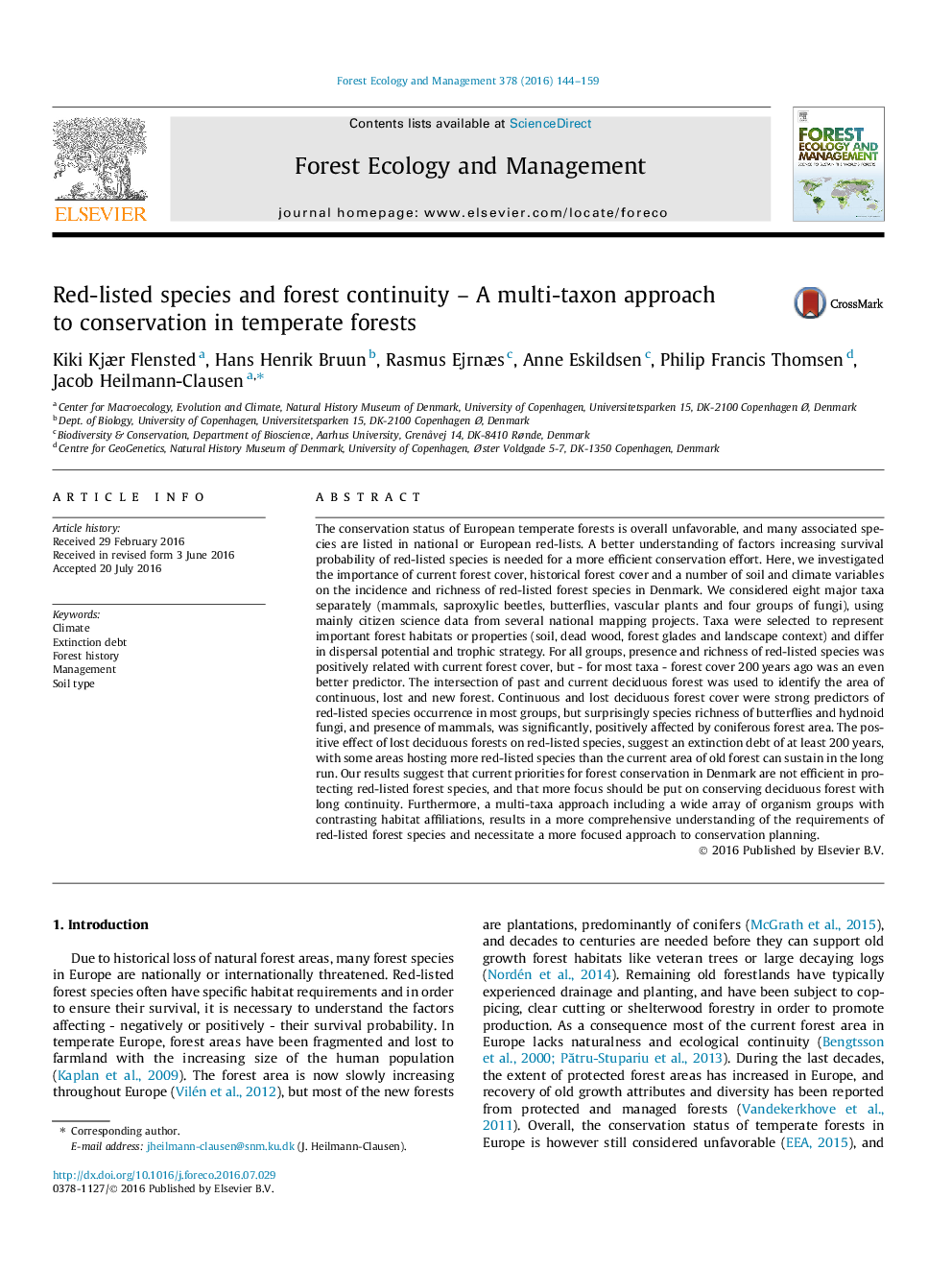| کد مقاله | کد نشریه | سال انتشار | مقاله انگلیسی | نسخه تمام متن |
|---|---|---|---|---|
| 6542041 | 159144 | 2016 | 16 صفحه PDF | دانلود رایگان |
عنوان انگلیسی مقاله ISI
Red-listed species and forest continuity - A multi-taxon approach to conservation in temperate forests
ترجمه فارسی عنوان
گونه های قرمز ذکر شده و تداوم جنگل - یک روش چند منظوره برای حفاظت در جنگل های معتدل
دانلود مقاله + سفارش ترجمه
دانلود مقاله ISI انگلیسی
رایگان برای ایرانیان
کلمات کلیدی
آب و هوا، بدهی انقراض، تاریخ جنگل، مدیریت، نوع خاک،
موضوعات مرتبط
علوم زیستی و بیوفناوری
علوم کشاورزی و بیولوژیک
بوم شناسی، تکامل، رفتار و سامانه شناسی
چکیده انگلیسی
The conservation status of European temperate forests is overall unfavorable, and many associated species are listed in national or European red-lists. A better understanding of factors increasing survival probability of red-listed species is needed for a more efficient conservation effort. Here, we investigated the importance of current forest cover, historical forest cover and a number of soil and climate variables on the incidence and richness of red-listed forest species in Denmark. We considered eight major taxa separately (mammals, saproxylic beetles, butterflies, vascular plants and four groups of fungi), using mainly citizen science data from several national mapping projects. Taxa were selected to represent important forest habitats or properties (soil, dead wood, forest glades and landscape context) and differ in dispersal potential and trophic strategy. For all groups, presence and richness of red-listed species was positively related with current forest cover, but - for most taxa - forest cover 200Â years ago was an even better predictor. The intersection of past and current deciduous forest was used to identify the area of continuous, lost and new forest. Continuous and lost deciduous forest cover were strong predictors of red-listed species occurrence in most groups, but surprisingly species richness of butterflies and hydnoid fungi, and presence of mammals, was significantly, positively affected by coniferous forest area. The positive effect of lost deciduous forests on red-listed species, suggest an extinction debt of at least 200Â years, with some areas hosting more red-listed species than the current area of old forest can sustain in the long run. Our results suggest that current priorities for forest conservation in Denmark are not efficient in protecting red-listed forest species, and that more focus should be put on conserving deciduous forest with long continuity. Furthermore, a multi-taxa approach including a wide array of organism groups with contrasting habitat affiliations, results in a more comprehensive understanding of the requirements of red-listed forest species and necessitate a more focused approach to conservation planning.
ناشر
Database: Elsevier - ScienceDirect (ساینس دایرکت)
Journal: Forest Ecology and Management - Volume 378, 15 October 2016, Pages 144-159
Journal: Forest Ecology and Management - Volume 378, 15 October 2016, Pages 144-159
نویسندگان
Kiki Kjær Flensted, Hans Henrik Bruun, Rasmus Ejrnæs, Anne Eskildsen, Philip Francis Thomsen, Jacob Heilmann-Clausen,
